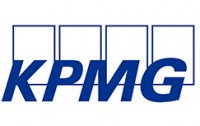Navigating permacrisis and embracing uncertainty
Boards must cultivate specific characteristics and skills, and act as catalysts for change.

Photo by Robert Ruggiero on Unsplash
Business as usual, whatever that meant, has permanently left the (board)room. In recent years, the world has entered a state of ‘permacrisis’, an extended period of instability and insecurity. This term encompasses the overwhelming sense of volatility, uncertainty and emergency that has become the new normal.
Two years on, lingering post-pandemic fatigue, climate disasters, global insecurity, economic chaos and a heaving hippodrome of political pantomimes means we are firmly living in an age of ‘permacrisis’.
In this operating context, boards can no longer rely on the ‘white gloves’ of absolute independence. Instead, they must act as navigators in an ambiguous, opaque and increasingly daunting environment.
Directors must embrace their role as catalysts for change by setting the right tone, staying on top of disruptive shifts, and fostering the resilience and wellbeing that enables the conditions for exceptional adaptability and flexibility.
They need to be equipped with the skills and characteristics to manoeuvre and manage in a complex and swiftly moving environment. This requires the ability to navigate ‘system transformation’ – sensing non-linear systemic shifts rather than just the linear change of individual variables, and at the same time create structure and direction where it doesn’t exist.
In the permacrisis environment, the challenges we face are frequently characterised as ‘emerging complexity’, which arises from disruptive change where the solutions are unknown, the problem statements keep changing and the stakeholders are not clear.
Tackling the converging complexities of, and succeeding in, this permacrisis requires an ‘emerging futures’ mindset – an ability to find equanimity in holding opposing ideas together, dislocating thinking from past experiences and leaning into the new challenges we may be facing today.
Success in steering an organisation depends not just on predicting or anticipating the future as spectators, but also actively participating in shaping it by creating a joint vision and mobilising stakeholder, management and business networks to support and realise this.
Directors must break free from the knowing-doing trap of governance in order to adopt new ways of thinking and establish new norms within systems that are historically reliant on doing things faster, better, cheaper – an approach which can feel incredibly uncomfortable and difficult.
Yet, without the full support of the board, management teams are unlikely to take the big bets required to innovate, let alone execute successfully on transformational change. This requires breaking habitual patterns in board and management relationships, letting go of agendas and defences, and applying a heightened level of awareness and curiosity.
The very foundation of a board role requires the ability to anticipate and embrace risk, while continuing to avoid, mitigate and manage it.
However, as operating environments and challenges become more complex, so too does the risk-reward expectations of directorship. They must navigate the delicate balance between control and dynamism, while also having the courage to influence the social capital, coordination and understanding required for effective governance.
To succeed in this environment, directors must develop and refine their own purpose as linked to the performance of the organisation. They must also create a shared language that encourages new ways of working and thinking, and align participation around the table to build the organisation’s capacity to pivot into uncharted territory. Even micro changes built into mental models and process can help drive fundamental shifts to support decision-making and progress when the path ahead is unclear.
It is important to get comfortable with uncertainty and see it as an opportunity for growth and development. Directors can do this by engaging with unconventional voices and seeking out trailblazers within their networks to open up new and unfamiliar questions and foster a level of comfort in not always having the answers. Ultimately, it helps nurture the intellectual muscle required for future-focused leadership.
“Directors must break free from the knowing- doing trap of governance in order to adopt new ways of thinking and establish new norms within systems that are historically reliant on doing things faster, better, cheaper.”
Decision-making can be a lengthy process in New Zealand. It’s a culture that prides itself on consensual, participatory and egalitarian decision-making where subordinates are just as important as leaders in the consultation process. While this is a wonderful and equalising trait, it can slow down an organisation’s ability to change in a timely manner.
To overcome this, structures and frameworks are needed to liberate the choices and decision-making ability of the broader management and create tangible shifts in an organisation’s ability to adapt and evolve. A future-focused lens allows for understanding of multiple scenarios and the ability to shift to alternative pathways as things change or become clearer.
The ‘Barnier method’ can provide a blueprint for critical momentum. Employed by the EU during Brexit negotiations, it provides an approach to maintaining unity towards a collective goal, despite differing benefits, costs and agendas among parties and stakeholders. In the context of unifying agendas and creating transformational shifts at speed, this approach could be adopted to provide an innovative solution to pursuing long-term strategies and objectives.
Fostering and enabling sustained organisational resilience and agility in a volatile and constantly changing environment requires comfort in, and nurturing of, a culture of experimentation.
For directors and leaders, that means having the ability, as well as the stakeholder backing, to change course when solutions are not working. Directors should support efforts to build strategic foresight capacity and embed flexible frameworks and ways of working.
Reviewing the current board governance approach is a good starting point. Questions to ask may include, ‘Is our approach outdated?’ ‘Does it constrain rather than allow the organisation to flex and change in times of need?’ ‘Is there value in exploring innovative mechanisms for decision- making processes and more loose forms of coordination?’
Expertise and experience aside, directors and boards prepared to adapt and evolve will be instrumental in shaping and creating a legacy that will inspire future leaders.
